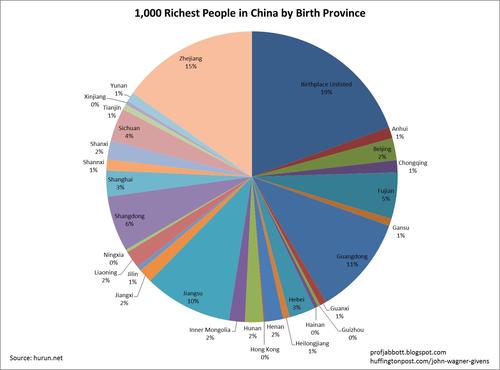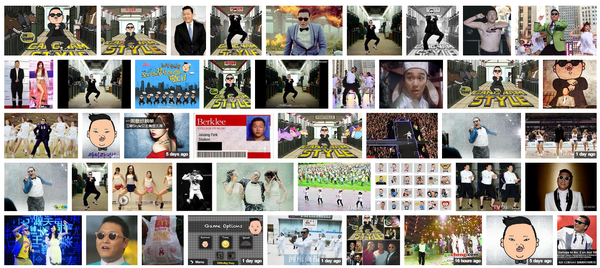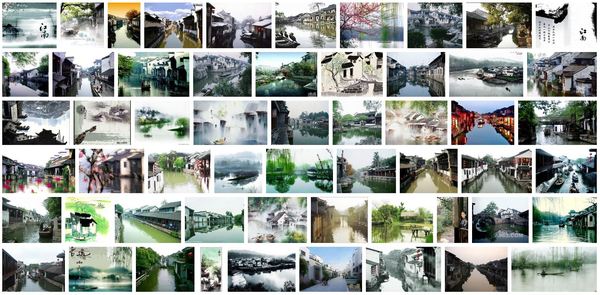
"Gangnam Style," the enticingly absurd Korean pop song, music video, and associated dance has been dominating pop, rap, and dance charts around the world, even inspiring European flash mobs in the tens of thousands. While many readers may be loath to suffer through one more half-baked Gangnam parody video, the original meaning has been understandably lost on non-Korean speakers who have no idea that Gangnam is, in fact, the wealthiest district of Korea's capitol, Seoul. In my continuing effort to beat a dead horse dance, however, I have been re-overanalyzing Hurun's list of the 1,000 richest Chinese mainlanders (see: parts one, two, and three) and I came to realize that China has actually had its own Gangnam style for a millennium.
The general unevenness of China's development can be seen reflected in the pie chart above, which shows in which provinces Chinese billionaires were born. The vast majority come from areas near the coasts, where China's export manufacturing boom first took off. Underdeveloped infrastructure and onerous regulation meant that it was difficult for interior provinces to get products to export hubs. Coastal areas, on the other hand, benefit of the twinned effects of a freer hand on regulation (through Special Economic Zones) and an excellent geographic location to easily reach foreign export markets.
The biggest cluster of China's super-rich come from Zhejiang, Jiangsu and Shanghai, which together make up the Yangtze River Delta Economic Zone and account for over a quarter of the wealthiest people in China. Centered on the financial hub of Shanghai, the region is host to a number of large wealthy cities like Nanjing, Suzhou, Hangzhou, and Ningbo, as well as important industries such as automotive, electronics and textile manufacturing with global access through some of the world's busiest ports in Shanghai, Ningbo, and Nanjing. But the region's recent success is really only the reemergence of an area that has been the wealthiest part of China for the better part of a millennium, thanks to the manufacture of and trade in China's traditional luxuries: tea, silk, and porcelain. Relatedly, it also has a long history as the principal breeding ground of China's intellectual elite and hence high culture.
But what does any of this have to do with Gangnam style? Well, long before it was known as the Yangtze River Delta Economic Zone, the region was more commonly referred to as Jiangnan, the exact same Chinese characters as the Koreans use for Gangnam. The region of Seoul does not seem to be named after Jiangnan in China, both just happen to be south of their respective rivers, the Yangtze and the Han, and are therefore named with the same characters 江 "river" and 南 "south".
The fact that both areas share the same name seems to be a coincidence. It is, however, a fitting one given that their economic success has led both areas to serve as aspirational icons of both material luxury and culture. Indeed, "the very name of Jiangan, a popular poetic allusion, conjured up images of abundance, hedonism, and sensual beauty, the identities of the privileged few who could partake of these riches were always a matter of contestation." Both regions have also spawned cultural phenomenon that others seek to emulate, from Tang Dynasty poetry to PSY's philosophy, "dress classy dance cheesy".
The coincidence also illustrates the time-honored practice of economic and cultural elites looking down their nose at those who have less. The point of Gangnam style is to poke fun at "the posers and wannabes that put on these airs and say that they are 'Gangnam Style'," even though they are not really from Gangnam. Similarly, the city of Yangzhou had been considered part of Jiangnan for centuries, but when railways made its position on the Grand Canal irrelevant, leading to economic decline, it was suddenly discovered to be on the wrong side of the river. So before enjoying your horse dance, Tang Dynasty poem, or Jiangnan-made Volkswagen, don't forget to check that they came from the right side of the river.



